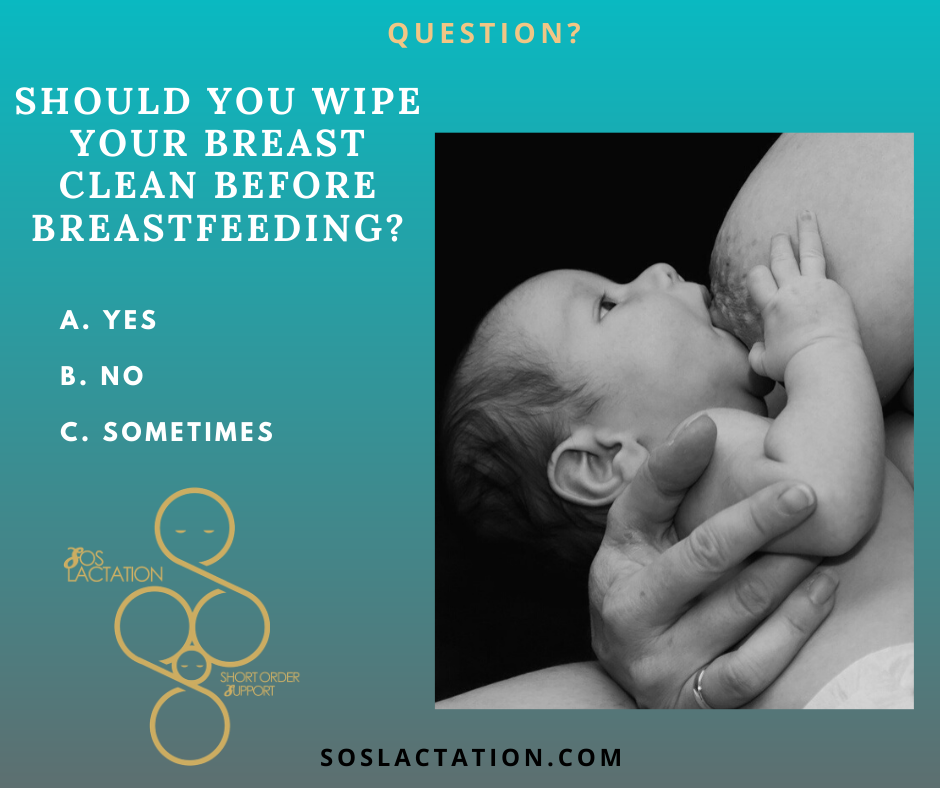The correct answer is B. You do not want to wipe the breast before latching and breastfeeding.
Let’s do a breakdown of what we are dealing with here. There are the breasts, which are made up of fatty tissue, nerves, veins, connective tissue, blood vessels, lobules (mammary glands), and lymph nodes.
The connective tissue and ligaments give breasts their shape and support. During pregnancy (and over time) these ligaments can stretch causing breasts to hang lower. This happens with pregnancy and is not the result of breastfeeding itself as many assume.
Mammary glands produce breastmilk during pregnancy and when breastfeeding. These glands are like sweat glands and only found in mammals, hence the name ‘mammary’ gland. Each gland consists of lobules which is what produces the milk. This connects to ductal lobes, which connect to lactiferous ducts (milk ducts) that deliver the milk through the nipple to the baby.
On the outside we have breasts, and on the breast is the nipple. The darker circular portion of skin surrounding the nipple is called the areola. Usually women will notice their areola grows larger and darker during pregnancy. This means her body is beginning the process of making milk to breastfeeding the baby.
On the areola are small bumps called Montgomery glands. On average woman have about 9 Montgomery glands on each breast. It is normal for these glands to secrete small beads of milk for some women. These glands produce and oily substance that contain antimicrobial factors and provide lubrication. One of my favorite things about Montgomery glands is that the oil they produce smells like amniotic fluid assisting babies in latching onto the breast after birth. Babies don’t have the best vision, but they can see up close and see contrast. The darkened areola creates a bullseye to help babies latch onto the breast after birth.
The oil the glands produce help prevent infection by preventing bad germs from growing. And let’s not downplay the importance of lubrication. When women begin breastfeeding, the areola and nipple go back and forth from being wet then dry, ultimately drying out the nipple leaving it more susceptible to cracking and bleeding. For this reason, it is not advised to wipe the areola before latching or wash frequently with soap (particularly scented soaps.) That lubrication and scent is helping the breast stay healthy and helping the baby latch and feed.

